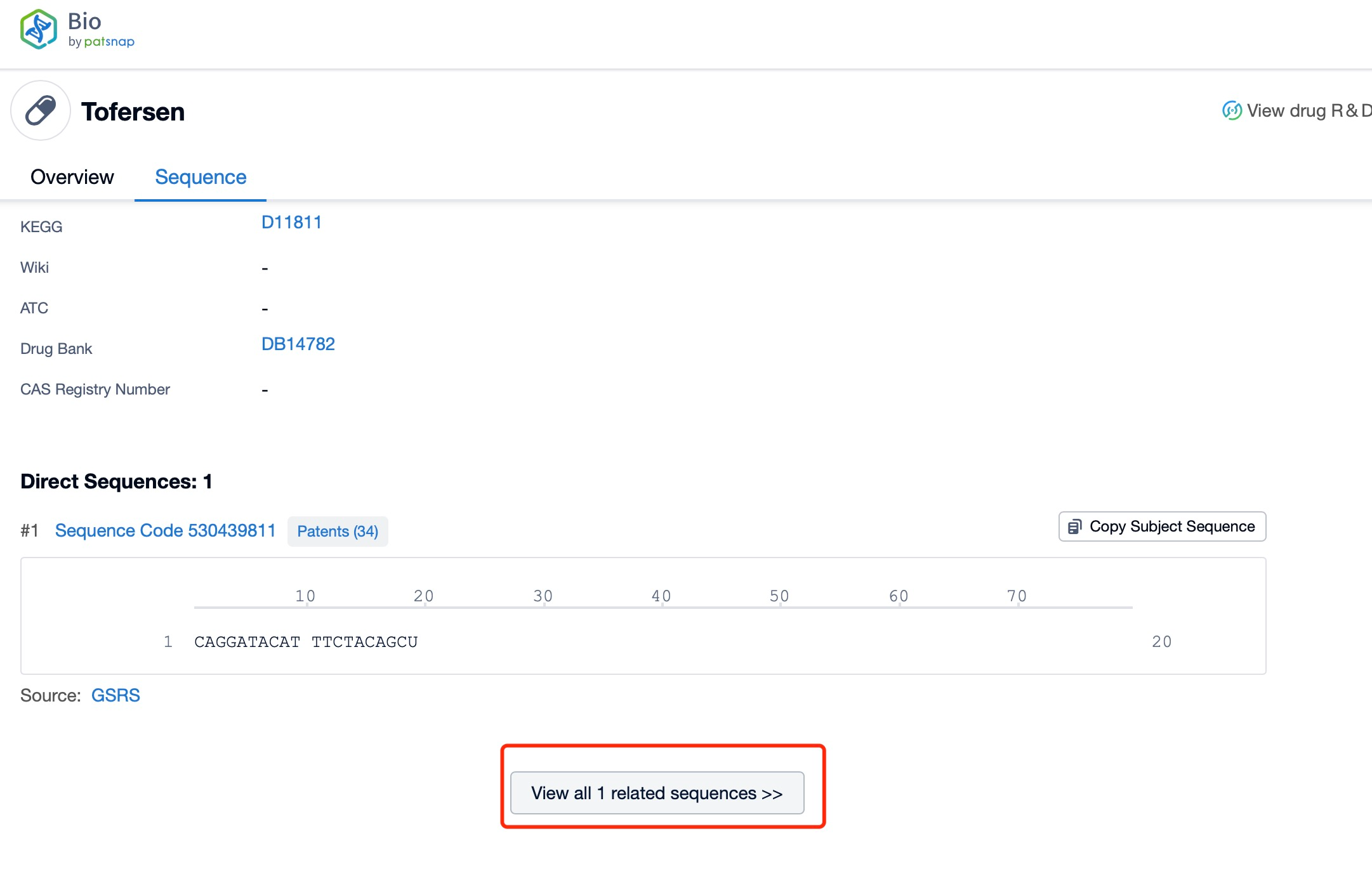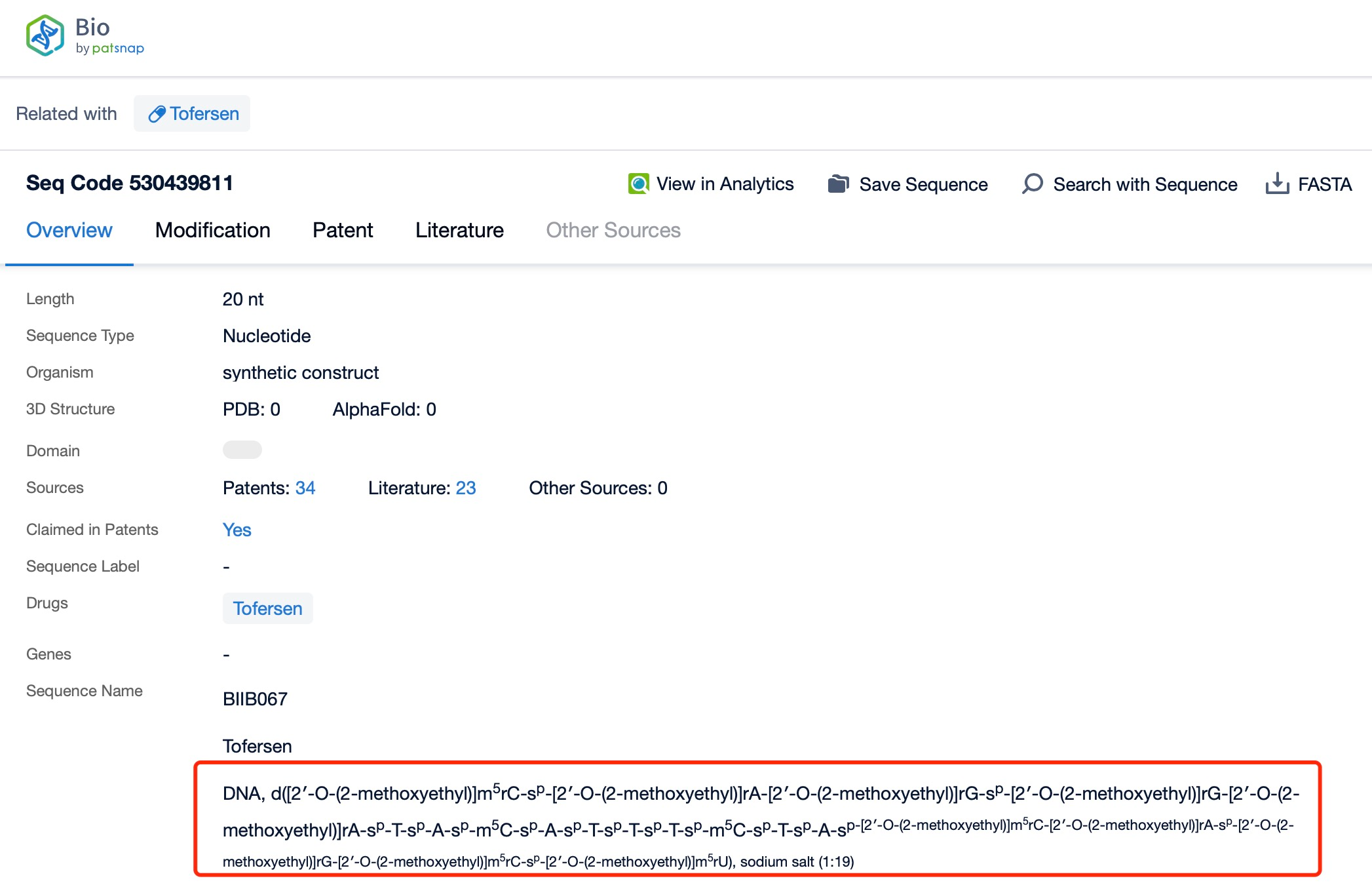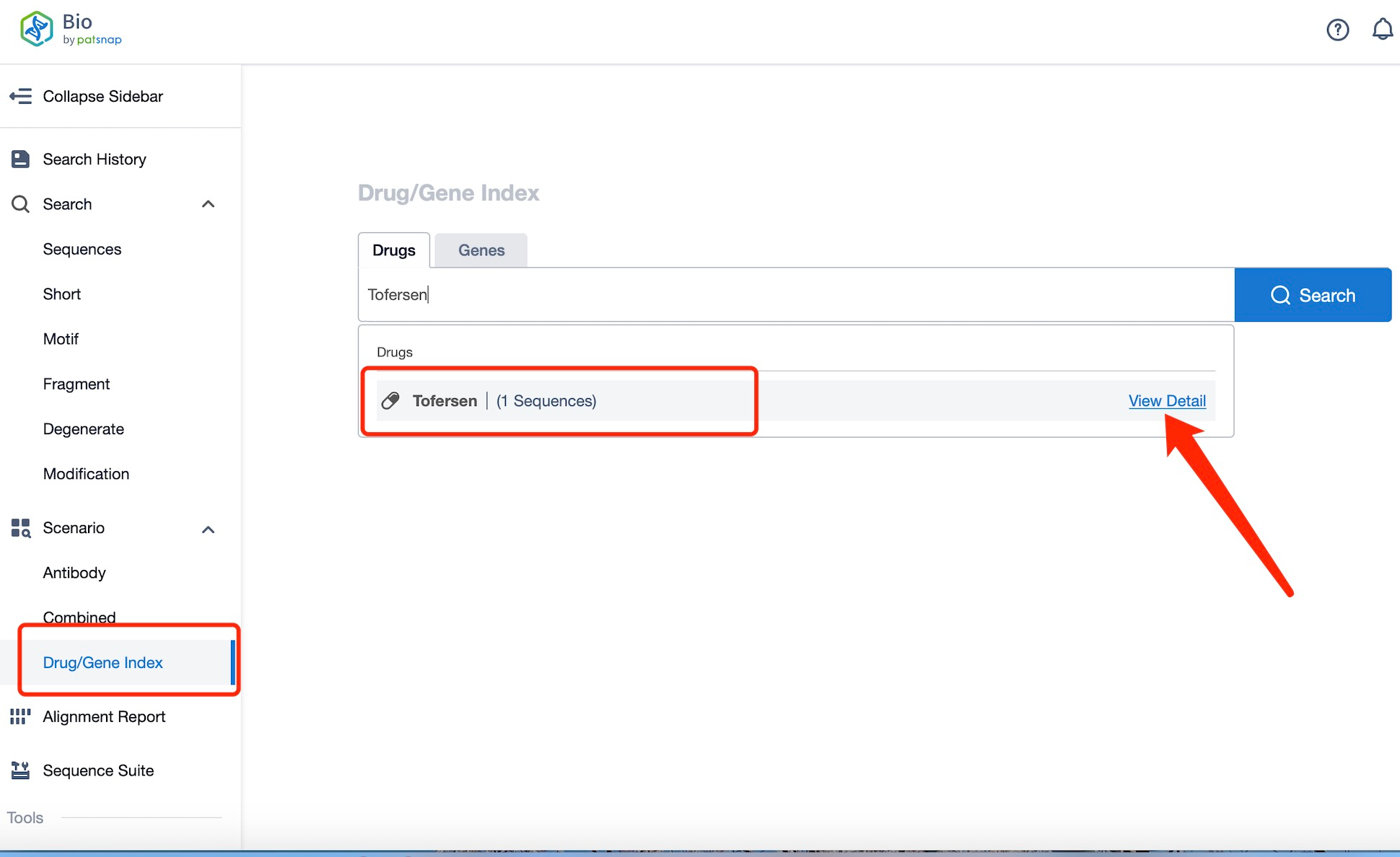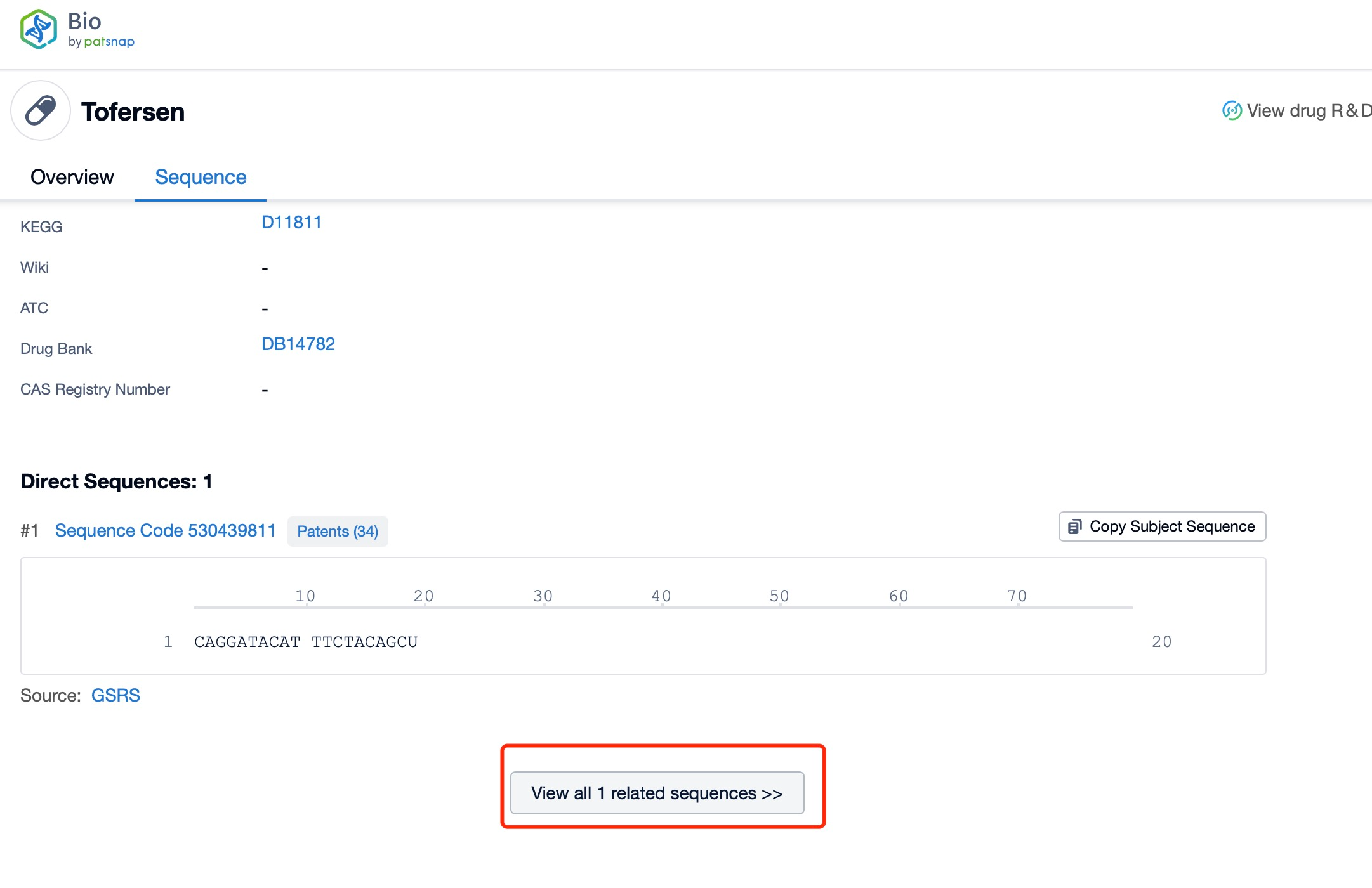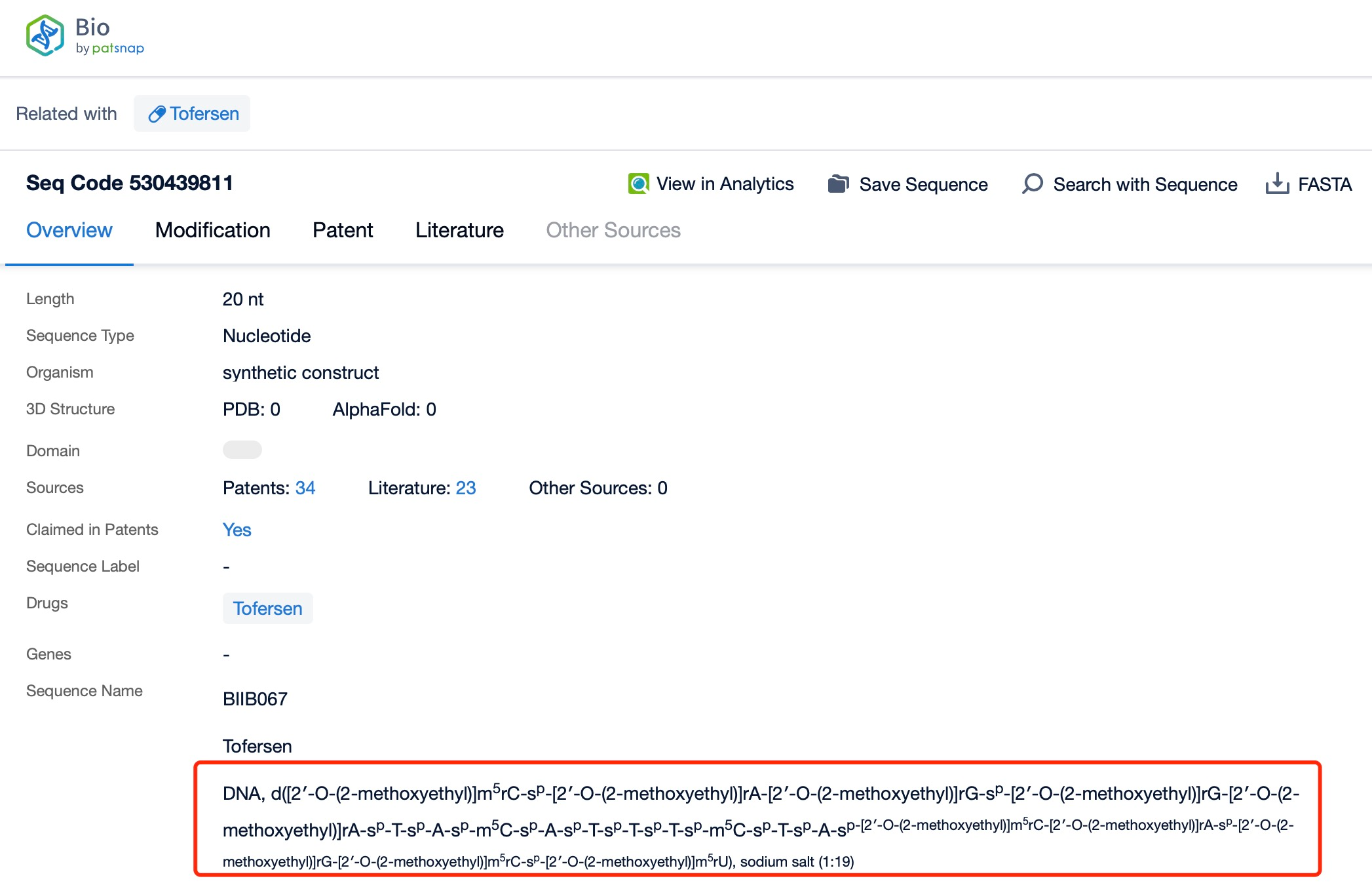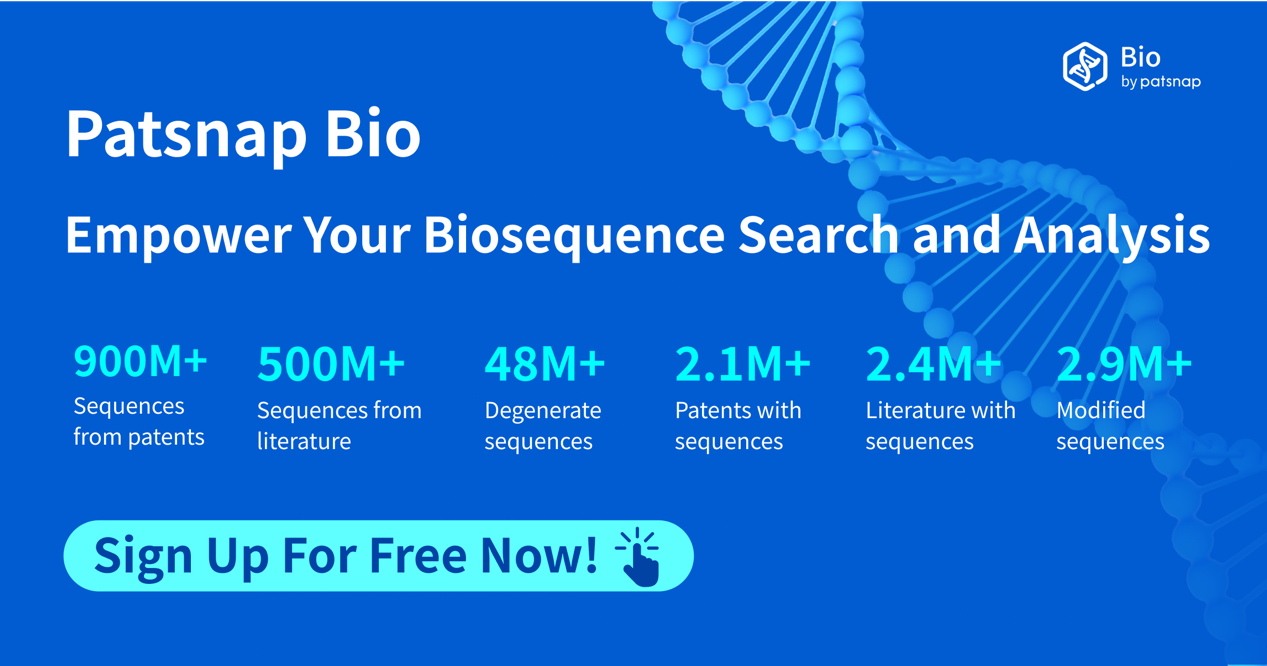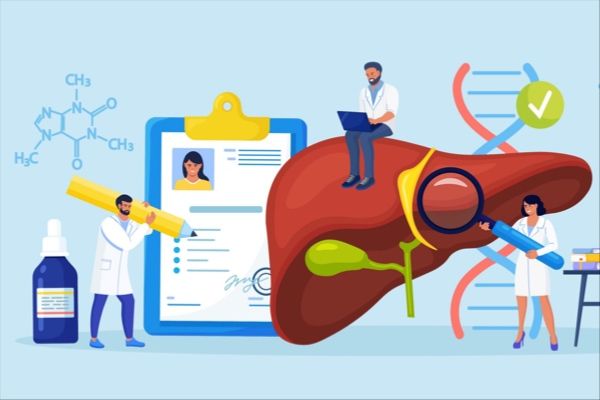How to find the sequence of Tofersen?
Tofersen, developed by Biogen in collaboration with Ionis Pharmaceuticals, is an antisense oligonucleotide that targets the superoxide dismutase 1 (SOD1) mRNA. SOD1 is an enzyme involved in the detoxification of superoxide radicals, and mutations in the SOD1 gene are associated with amyotrophic lateral sclerosis (ALS), a progressive neurodegenerative disease characterized by the loss of motor neurons. Tofersen is indicated for the treatment of ALS in patients with SOD1 mutations, aiming to reduce the production of mutant SOD1 protein, which is believed to contribute to the pathogenesis of the disease. By targeting the SOD1 mRNA, tofersen aims to slow the progression of ALS and improve patient outcomes.
Summary of Research Progress of Tofersen
Tofersen works by binding to the SOD1 mRNA, leading to its degradation via RNase H-mediated cleavage. This prevents the synthesis of the mutant SOD1 protein, thereby reducing its toxic effects on motor neurons. By addressing the underlying genetic defect, tofersen aims to slow the progression of ALS and preserve motor function. Tofersen is administered intrathecally, directly into the cerebrospinal fluid, which allows for targeted delivery to the central nervous system where the motor neurons are located. The drug is currently under review by regulatory agencies, including the U.S. Food and Drug Administration (FDA) and the European Medicines Agency (EMA), and has shown promising results in clinical trials.
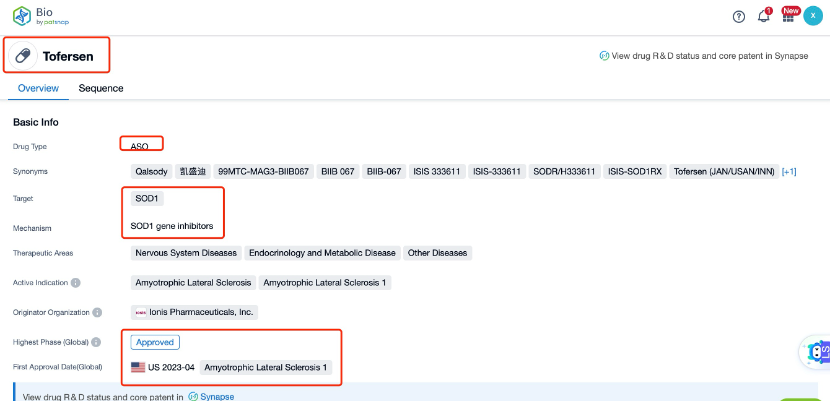
Globally, the competition in the ALS market is evolving, with several companies developing novel therapies. Tofersen faces competition from other antisense oligonucleotides and gene therapies. For example, Wave Life Sciences is developing WVE-NSR1, another antisense oligonucleotide targeting SOD1, and Audentes Therapeutics (part of Astellas Pharma) is developing AT132, a gene therapy aimed at delivering a functional copy of the MTM1 gene for the treatment of X-linked myotubular myopathy. Despite this competition, tofersen remains a significant player in the ALS market due to its targeted approach and the unmet medical need for effective treatments for SOD1-related ALS.
Clinical research on tofersen has demonstrated its efficacy and safety in treating ALS. The Phase 1/2 and Phase 3 clinical trials, such as the VALOR study, have shown that tofersen can significantly reduce the levels of mutant SOD1 protein in the cerebrospinal fluid and slow the progression of the disease. The drug was generally well-tolerated, with common side effects including headache, back pain, and procedural complications related to lumbar punctures. Ongoing and future trials aim to further evaluate the long-term safety and efficacy of tofersen, as well as explore its potential in combination with other therapies to achieve better outcomes.
Sequence Characteristics of Tofersen
Tofersen is a 20-nucleotide phosphorothioate-modified oligonucleotide. The sequence of tofersen is specifically designed to bind to the SOD1 mRNA, targeting a region that is essential for the synthesis of the SOD1 protein. This sequence is optimized to ensure high specificity and efficiency in binding to the target mRNA, which is crucial for the drug's therapeutic efficacy and safety. The precise sequence of tofersen is a proprietary information, but it is known to be highly complementary to the target SOD1 mRNA, allowing for effective RNase H-mediated cleavage and degradation.
Chemical Modification and Species of Tofersen
The chemical modifications in tofersen include phosphorothioate linkages. The phosphorothioate backbone replaces one of the non-bridging oxygen atoms in the phosphate group with a sulfur atom, enhancing the stability of the oligonucleotide and protecting it from nuclease degradation. This modification is crucial for the drug's ability to reach and bind to the target mRNA in the central nervous system. The phosphorothioate backbone also improves the pharmacokinetic properties of the drug, such as its half-life and tissue distribution, which are important for its therapeutic effectiveness.
The phosphorothioate modifications in tofersen provide several key advantages. First, they significantly enhance the stability of the oligonucleotide, allowing it to remain active in the cellular environment for a longer period. This increased stability is crucial for the drug's effectiveness in binding to and degrading the SOD1 mRNA. Second, the phosphorothioate backbone improves the pharmacokinetic profile of the drug, increasing its half-life and bioavailability. This means that the drug can be administered less frequently, which is beneficial for patient convenience and compliance. Third, the phosphorothioate modifications reduce the risk of off-target effects by enhancing the specificity of the oligonucleotide for its target mRNA.
The role of the phosphorothioate modifications in tofersen is multifaceted. They protect the oligonucleotide from degradation by nucleases, ensuring that it can reach its target in the central nervous system. They also enhance the binding affinity of the oligonucleotide to the SOD1 mRNA, ensuring efficient and specific RNase H-mediated cleavage. Additionally, the phosphorothioate modifications improve the pharmacokinetic properties of the drug, such as its half-life and tissue distribution, which are essential for its therapeutic effectiveness. These modifications also reduce the immunogenicity of the oligonucleotide, minimizing the risk of adverse immune responses.
Summary and Prospect
In summary, tofersen represents a significant advancement in antisense technology and the treatment of amyotrophic lateral sclerosis (ALS) in patients with SOD1 mutations. Its mechanism of action, involving the degradation of SOD1 mRNA, has shown promising results in reducing the levels of mutant SOD1 protein and slowing the progression of the disease. Despite facing competition from other antisense oligonucleotides and gene therapies, tofersen offers a unique advantage with its targeted approach and the unmet medical need for effective treatments for SOD1-related ALS. Future research may focus on improving delivery methods and exploring combination therapies to enhance its clinical utility. The sequence characteristics and chemical modifications of tofersen, including its phosphorothioate backbone, contribute to its stability, specificity, and efficacy, making it a valuable tool in the management of ALS. However, the need for regular intrathecal injections and the management of side effects will continue to be important considerations in its clinical use. The ongoing and future clinical trials will provide further insights into the long-term safety and efficacy of tofersen, potentially paving the way for its approval and broader use in the treatment of ALS.
How to find the sequence of an ASO?
In Patsnap Bio, you can find the sequence and latest research and development advances of all ASOs.
Taking Tofersen as an example, first click on the Drug/Gene Index on the Patsnap Bio homepage. Here you can search for sequence information by drug and gene names. Enter ' Tofersen ' in the search box and click to view the details. On the details page, you can find the basic information and research progress of Tofersen.
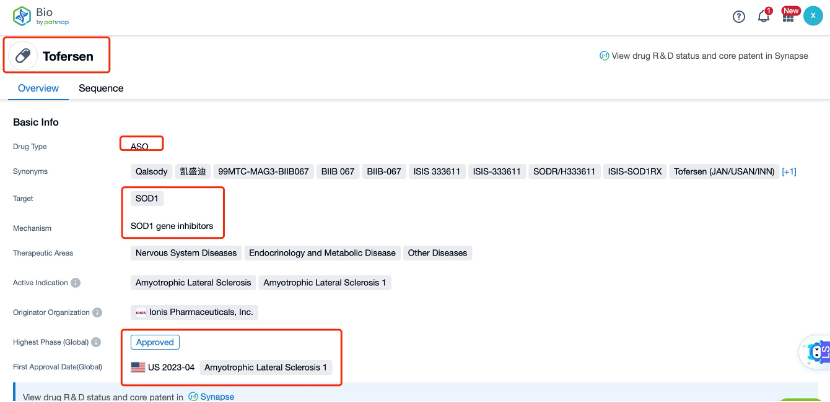
Click "View all related sequences" below the sequence information to search for and retrieve all biological sequences similar to this information.
Clicking on the sequence name will provide you with all the basic information of that sequence.
Patsnap Bio helps you turn weeks into minutes with cutting-edge AI-enabled tools built to master the complexities of sequence retrieval and automate IP analysis with precision and ease.
